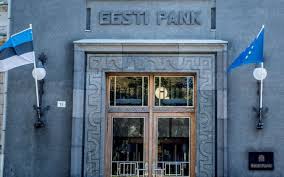Analytics, Banks, Estonia, Financial Services
International Internet Magazine. Baltic States news & analytics
Thursday, 25.04.2024, 12:11
Estonia's current account surplus contracts 7-fold on year to 0.3% of GDP
 Print version
Print version |
|---|
In the second quarter, the surplus on the current account of
the balance of payments was 118 mln euros, equaling 1.8% of GDP. The surplus
arose from the positive balance of exports and imports of services and support
from the Structural Funds of the European Union, the Bank of Estonia said.
The surplus on the services account in the second quarter
increased by 5% over the year to 559 mln euros, with growth occurring primarily
in computer and other business services. The goods deficit increased by 16%
over the year to 332 mln euros. It grew mainly because of an increase in
imports of mineral products, electrical equipment and mechanical machinery.
The net outflow of investment income was 231 mln euros, 7%
less than the year before. The outflow was mainly reduced by growth in the
income of pension funds because of their investment in foreign securities, and
a decline in the net outflow of the direct investment income of financial
companies. The surplus on the capital account was 38 mln euros. Almost half as
much again was received in investment support as in the second quarter of 2017.
The net total of the current and capital accounts saw a
surplus of 155 mln euros in the second quarter. This meant that the Estonian
economy was again a net lender to other countries, so the country as a whole
invested more financial assets abroad than it received from there.
The financial account of the balance of payments shows that
investment abroad from Estonia was 36 mln euros larger in the second quarter of
2018 than investment in Estonia from abroad. The net capital outflow was
primarily a consequence of investments in foreign securities by insurance
companies and pension funds. The net outflow of investment through the banking
system was 805 mln euros and occurred through growth in resident deposits,
which allowed the banks to reduce their foreign liabilities and increase their
foreign assets.
The growth in client deposits came from investment in
companies and from the current account, as high levels of exports led more
money to flow into companies, which they deposited in banks operating in
Estonia. The inflow of direct investment was 762 bn euros bigger than the
outflow. A large part of the inflow of investment came from the sale of shares
in businesses by residents to non-residents.
The net international investment position at the end of the
second quarter of 2018 showed that the external liabilities of Estonian
residents exceeded their external assets by 7.2 bn euros, or 29% of GDP for
four quarters.
Statistics for the gross external debt show that at the end
of the quarter, the debt assets of Estonian residents from non-residents were
3.9 bn euros, or 16% of GDP for four quarters, larger than their debt
liabilities. Both debt assets and debt liabilities grew during the quarter.








 «The Baltic Course» Is Sold and Stays in Business!
«The Baltic Course» Is Sold and Stays in Business!

